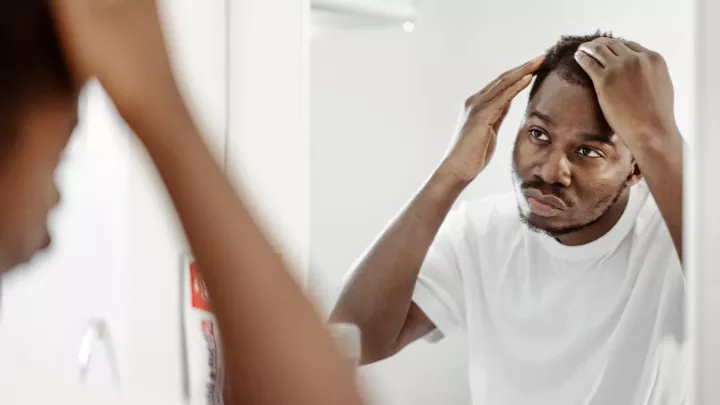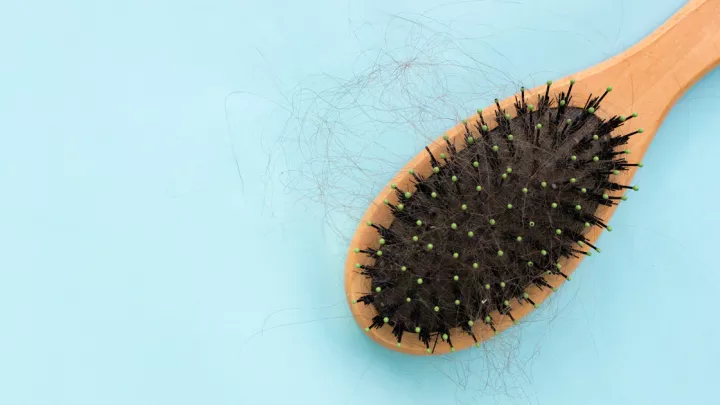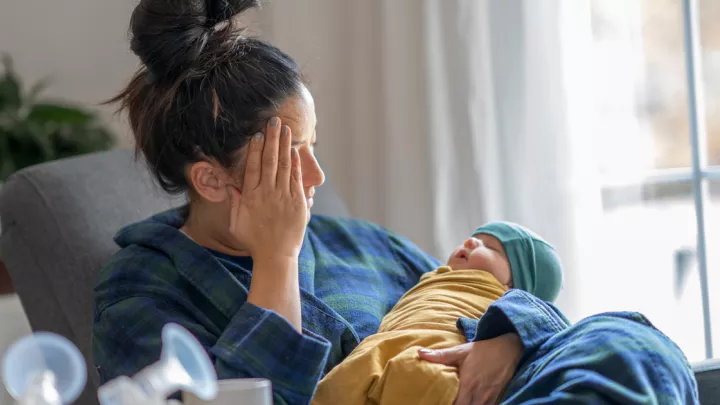Hair loss in women: What causes it and how to stop it

Losing your hair can affect your confidence. While most men do not have a problem seeking help for hair loss, women tend to keep it to themselves, often leading to feelings of isolation and depression.
But hair loss is quite common in females, affecting more than 50% of women at some point in their lives and approximately 80% of women by age 80. The most significant cause of hair loss in women is female pattern hair loss, or androgenetic alopecia, which affects about 30 million women in the U.S.
"I see more women in my office than I do men," says Nebraska Medicine dermatologist Ronald Sulewski, MD. "This may be due in part to the fact that hair loss is less acceptable to most women. Fortunately, we have several effective treatment options for both men and women."
Below, we discuss how hair loss differs in men and women, common causes of female pattern hair loss, and how to stop it.
How does female hair loss differ from male hair loss?
Androgenetic alopecia is a common form of hair loss in both men and women. In men, this condition is also known as male pattern baldness. Hair is lost in a well-defined pattern, beginning above the temples. Over time, the hairline recedes to form a characteristic "M" shape. Hair also thins near the top of the head, often progressing to partial or complete baldness. In women, the hair becomes thinner all over the head, and the hairline does not recede. It’s also not as common for women with androgenetic alopecia to experience complete baldness.
Signs of female pattern hair loss include:
- Hair falling out or breaking off in large amounts daily
- Noticeable patches of thinner or missing hair, including on the crown of the head
- Seeing scalp skin through your hair
Why am I losing my hair?
Like men, as women age, they experience changes in their androgen levels. Androgens are sex hormones that contribute to growth and reproduction. They also regulate hair growth. Over time, these hormones cause hair follicles to shrink, resulting in shorter and finer strands of hair. Eventually, new hair no longer grows in those areas, leading to the appearance of sparse or thinning hair. Ironically, you may simultaneously develop more hair on other areas of the body, such as the face or chin. This is because the receptors that bind to androgens are different in distinctive areas of the body.
In some cases, female pattern hair loss can be caused by:
- Genetics (Women who have mothers or close relatives with female pattern baldness are at higher risk of developing baldness.)
- Certain medications or supplements, such as blood pressure medicine, gout medicine and high doses of vitamin A
- Prior surgeries, which can cause extreme physical stress or shock to your body
- Certain health conditions, such as polycystic ovary syndrome, thyroid disease, precocious puberty and anemia
- Hormone changes caused by pregnancy, menopause or birth control pills
Certain health conditions may also cause other symptoms, such as a rash, redness, pain, peeling of the scalp, hair breakage, patch hair loss, or an unusual pattern of hair loss. It’s important to talk to your doctor if you experience any of these symptoms, as they may be a sign of a more serious condition.
"For most women, female pattern hair loss becomes an issue in midlife, but it can begin earlier," says Dr. Sulewski. “If you’re experiencing early female pattern hair loss or a constellation of other symptoms, you should consider being evaluated by your doctor to determine the cause and rule out other possible health problems.”
How can I treat female hair loss?
Hereditary hair loss is often unavoidable. However, there are steps you can take to reduce your risk, such as:
- Avoiding smoking
- Keeping vitamin A intake low
- Limiting sun exposure
- Eating a healthy diet or taking supplements that are high in biotin, a B-vitamin that helps stimulate hair growth
If you experience female pattern hair loss, it’s a good idea to mention it to your doctor, who can refer you to a dermatologist. Dermatologists are specifically trained in the diagnosis and treatment of hair, skin and nail conditions, including hair loss.
“It’s not a bad idea to bring it up to your doctor during a routine well woman exam, but your doctor will most likely refer you to a dermatologist, who is more suited to treat hair loss,” says Dr. Sulewski.
Depending on your specific symptoms, the dermatologist may recommend:
- Minoxidil – Approved for treating female pattern hair loss, the over-the-counter treatment is available to purchase as a 2% or 5% liquid or foam solution
- Finasteride – A hormone-blocking prescription medication to treat hair loss
- Platelet-rich plasma, or PRP – Consists of a series of in-office blood draws and injections
- Hair transplant – The most effective and aggressive option, this procedure is done under local anesthesia to remove stronger hair follicles (e.g., the back of scalp where hair is not thinning) and place it where you are thinning to help substantiate those areas
It’s important to note that certain drugs, including minoxidil and finasteride, are not safe for pregnant women or those who want to become pregnant.







